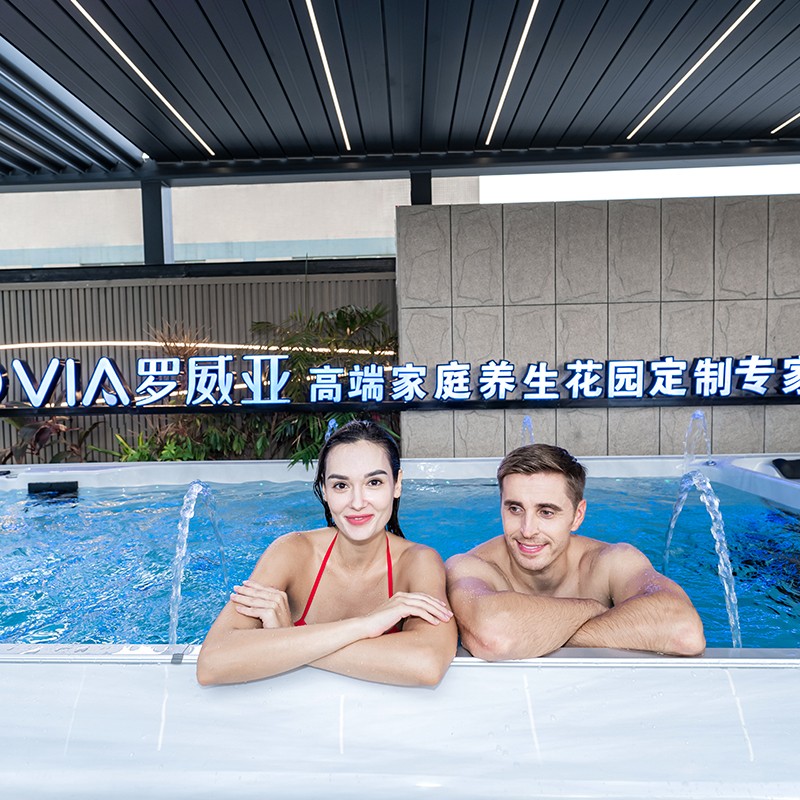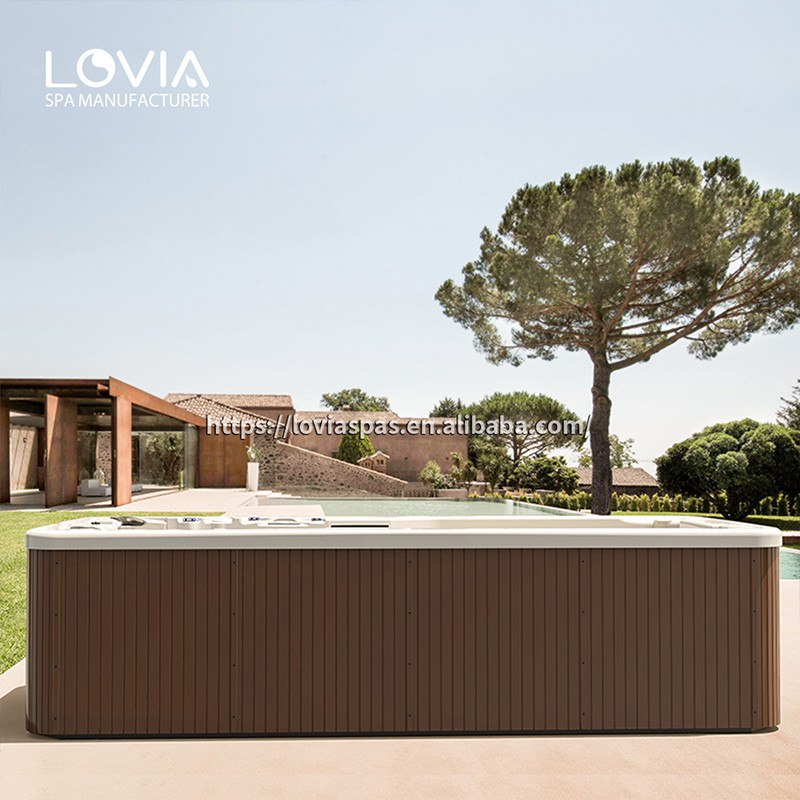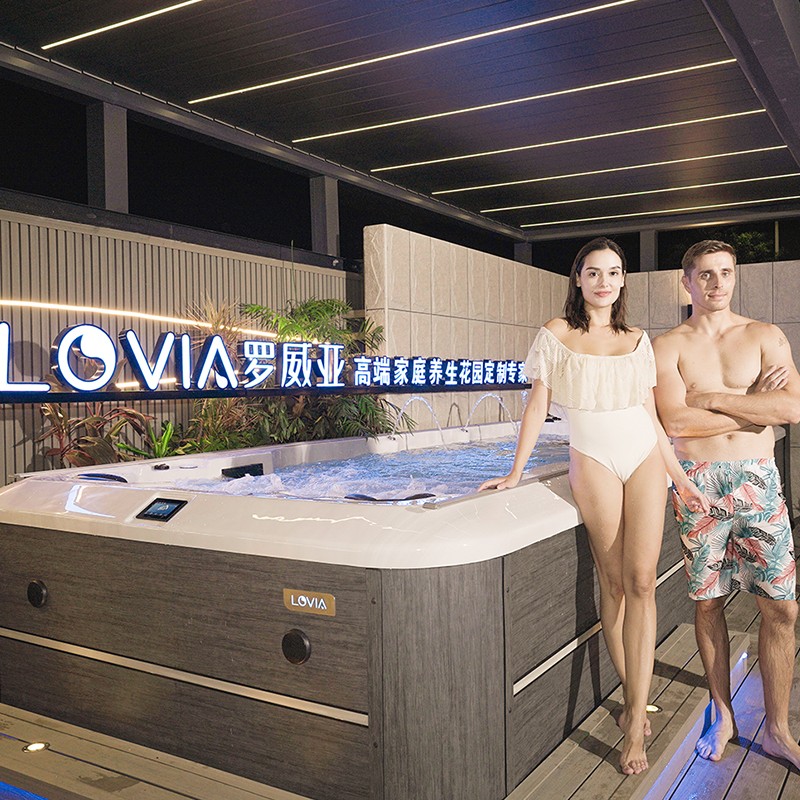
How dirty is the water in a swim spa jacuzzi?
2025-08-23 15:35Swim spa jacuzzi water is increasingly popular for its powerful water massage and comfortable warm water experience. Whether home users or regular gym and spa goers, many people seek relief and relaxation in a swim spa jacuzzi.
However, many users are unaware that the water quality in a swim spa jacuzzi may pose health risks. If the water quality is not properly maintained, it may contain a large number of bacteria, viruses, and other contaminants, posing a potential threat to the user's health.
So, just how dirty is the water in a swim spa jacuzzi? Why does water become dirty? And how can we ensure water safety? This article will analyze this issue in detail.

What contaminants may be present in the water of a swim spa jacuzzi?
The water in a swim spa jacuzzi is different from ordinary bathtub water. It is recycled and typically maintained at a relatively high temperature (approximately 37°C to 40°C) for extended periods of time. This environment is not only conducive to relaxation, but also provides ideal conditions for the growth of microorganisms. If water quality is not properly managed, the water in a swim spa jacuzzi can become quite "dirty." Key contaminants include:
1. Bacteria and Viruses
If the water in a swim spa jacuzzi isn't properly disinfected, it can become a breeding ground for bacteria and viruses. Common microbial contamination includes:
• Legionella: This can cause Legionnaires' disease (a severe form of pneumonia) or Pontiac fever (a flu-like illness). When contaminated water mist is inhaled, the bacteria can enter the lungs and cause infection.
• Pseudomonas aeruginosa: This bacterium can cause skin infections (such as hot tub rash) and otitis externa ("swimmer's ear").
• Escherichia coli: This bacterium can be present if the water is contaminated with feces and can cause gastrointestinal infections.
• Norovirus: This can cause acute gastroenteritis, resulting in vomiting, diarrhea, and abdominal pain.
2. Human Excreta
When entering a swim spa jacuzzi, some dirt and dirt are inevitably present on the user's skin. Even after showering, the following substances may enter the water:
• Sweat: Contains salt, urea, lactic acid, and various metabolic waste products.
• Urine: Some users may urinate, either accidentally or intentionally, leading to an increase in urea and ammonia levels.
• Skin Cells: The human body naturally sheds millions of skin cells every hour, and these cells can accumulate in the water.
• Skincare and Cosmetics: Chemicals such as sunscreen, lotions, perfumes, and hairsprays can dissolve into the water, affecting water quality.
3. Chemical Contaminants
To maintain the quality of the swim spa jacuzzi's water, many users use disinfectants such as chlorine, bromine, or ozone. However, improper use can cause the following problems:
• Chloramines: When chlorine reacts with sweat, urine, or other organic matter, it can produce irritating gases that can cause eye redness, skin irritation, and respiratory discomfort. • Excessive chlorine: Excessive disinfectant in the water can cause dry skin, allergies, and even respiratory irritation.
• Scale and mineral deposits: Excessive water hardness can clog pipes and affect the proper function of the spa.

Why does swim spa jacuzzi water become contaminated easily?
Swim spa jacuzzi water is more susceptible to contamination than ordinary bathtub water for several reasons:
1. High temperatures promote microbial growth
Swim spa jacuzzi water is typically maintained between 37°C and 40°C, a temperature range ideal for the growth of bacteria, fungi, and viruses. Compared to ordinary swimming pools, hot water allows microorganisms to multiply faster, increasing the risk of contamination.
2. Circulating water can cause contaminants to accumulate
Although swim spa jacuzzis typically have filtration systems, if the filters are not properly maintained, contaminants in the water can accumulate during circulation, gradually deteriorating the water quality. In particular, improper cleaning of the massage jets and pipes can create breeding grounds for bacteria and biofilm.
3. Frequent Human Contact
Swim spa jacuzzis are often shared by multiple people and used frequently. This means new contaminants enter the water with each use, and if water quality management isn't adequate, contamination levels can gradually increase.
4. Improper Water Quality Maintenance
Many users fail to regularly test water quality or use inappropriate disinfection methods, preventing their spa water from maintaining optimal condition. For example:
• Insufficient disinfectant application leads to rapid bacterial growth.
• Unstable water pH levels affect the effectiveness of disinfectants.
• Failure to replace filters promptly prevents the effective removal of impurities from the water.

How to ensure safe water quality in a swim spa jacuzzi?
To avoid health risks from water contamination, users need to take a number of measures to keep their swim spa jacuzzi clean and hygienic:
1. Regularly test water quality
Use a professional water quality tester or test strips to test the water's pH, chlorine or bromine concentrations, and other water quality parameters at least weekly. The ideal pH should be maintained between 7.2 and 7.8, and the chlorine or bromine concentration should meet sanitary standards.
2. Proper Disinfectant Dosage
Ensure the proper amount of disinfectant, such as chlorine or bromine, is added to kill bacteria and viruses in the water. Avoid overdosing, as this can cause irritation to the skin and respiratory system.
3. Maintain the Filtration System
Clean and replace the filter regularly to ensure it effectively removes impurities and microorganisms from the water. Generally, the filter cartridge should be replaced every 3-6 months.
4. Regular Water Changes
Although the water in a swim spa jacuzzi is recycled, a complete water change should be performed every 2-3 months to remove contaminants that cannot be degraded by filtration or disinfectants.
5. Personal Hygiene
Be sure to shower before entering a swim spa jacuzzi to reduce the amount of dirt, sweat, and chemicals that enter the water. Additionally, avoid eating or drinking in the spa tub to reduce the amount of external contaminants that enter the water.

How do I maintain a spa I purchase from your company?
Maintaining one of our spas is easy, thanks to our smart control systems and quality components. Each spa includes a user manual and maintenance guide. Regular care such as filter cleaning, water balancing, and inspecting jets will keep your spa running smoothly for years.
As your supplier, we also provide after-sales support, maintenance videos, and replacement parts. This service ensures a long lifespan and high customer satisfaction, which is essential for resellers, commercial buyers, and homeowners alike.
